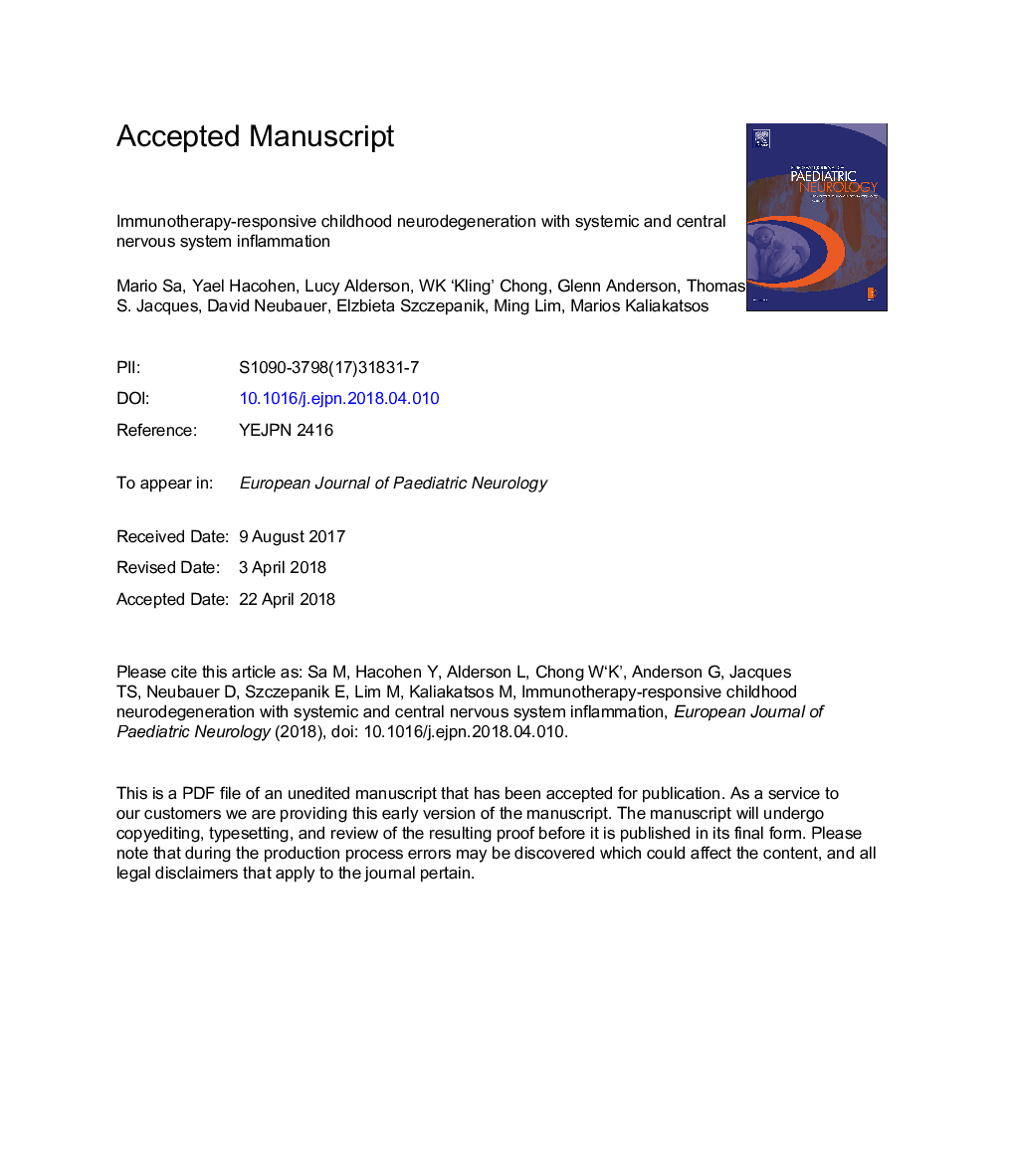| Article ID | Journal | Published Year | Pages | File Type |
|---|---|---|---|---|
| 10215422 | European Journal of Paediatric Neurology | 2018 | 17 Pages |
Abstract
Subacute neuroregression in association with raised neopterin and overexpression of interferon stimulated genes (ISGs) could indicate a type 1 interferonopathy. Here we describe a novel immunotherapy-responsive, clinico-immunological and imaging phenotype with evidence of innate immune activation. Three children (patient 1: 22-month-old boy; patient 2: 5-year-old girl; patient 3: 4-year-old girl) presented with asymmetric bilateral mixed dystonia and spasticity, regression in language (expressive more than receptive) and bulbar symptoms with no evidence of seizures. Symptoms evolved over several weeks to months. Brain MRI changes mimicked cerebral atrophy, initially asymmetric. CSF revealed raised neopterins. Blood RNA assay showed abnormal overexpression of ISGs and transient raised alanine aminotransferase (ALT). Importantly, all three children were treated with intravenous methylprednisolone and immunoglobulin with significant and sustained improvement in their motor and language function, and normalisation of imaging. Immune-mediated encephalitis can masquerade as subacute neuroregression.
Keywords
Related Topics
Life Sciences
Neuroscience
Developmental Neuroscience
Authors
Mario Sa, Yael Hacohen, Lucy Alderson, W.K. Kling Chong, Glenn Anderson, Thomas S. Jacques, David Neubauer, Elzbieta Szczepanik, Ming Lim, Marios Kaliakatsos,
